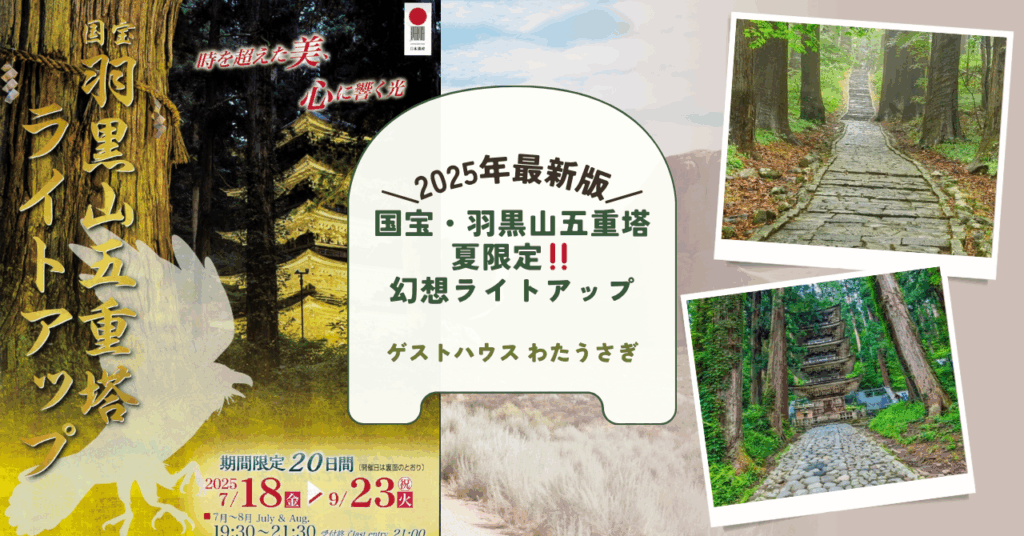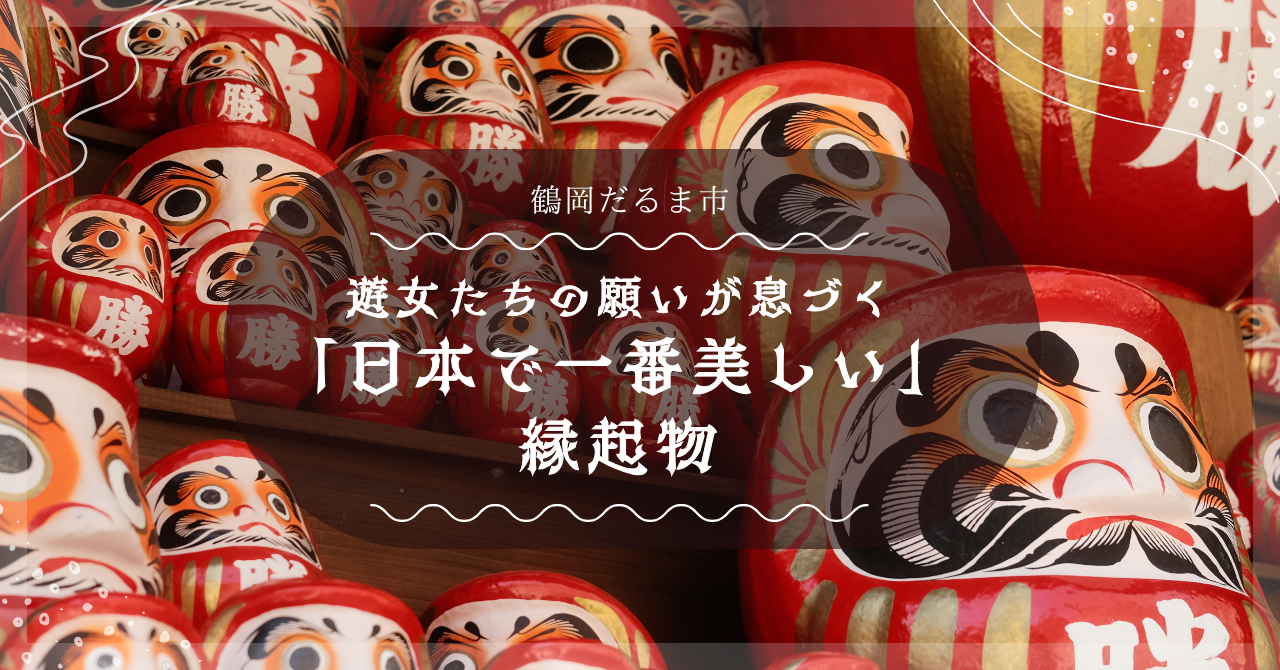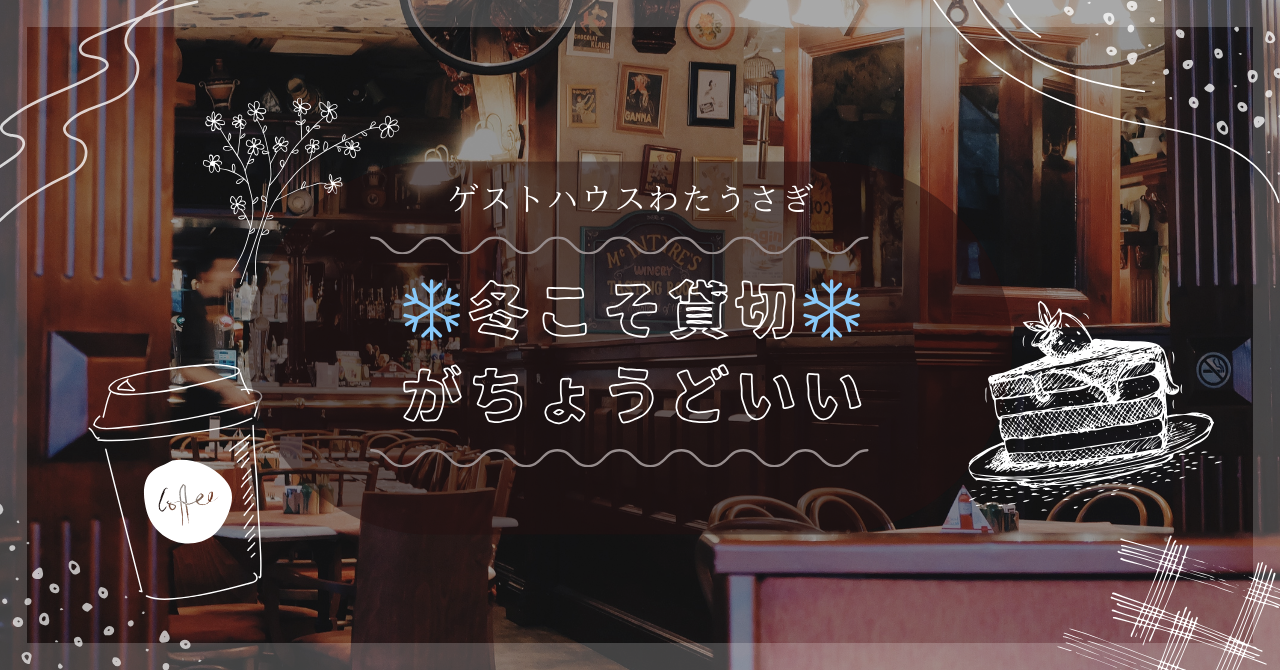A classic summer tradition in Tsuruoka— The “National Treasure Five-Story Pagoda Illumination” is back again this year!
Deep within the cedar forest, a sudden glimpse of the National Treasure pagoda appears.
Located in Tsuruoka City, Yamagata Prefecture, Mount Haguro stands at an elevation of 414 meters and has long been revered as a sacred mountain. As one of the Three Mountains of Dewa, it has welcomed countless ascetic practitioners and pilgrims over the centuries.
Along the mountain path, nestled in the silent cedar forest, stands a wooden pagoda that feels as if it has transcended time itself.
This is the National Treasure, the “Haguro-san Five-Story Pagoda.” It is the oldest five-story pagoda in the Tohoku region and one of the most iconic wooden structures in eastern Japan.
Step into this world, and you're greeted by a deep forest, moss-covered stone steps, and a tunnel of towering cedars overhead. Within this mystical scene, the five-story pagoda appears suddenly—radiating a powerful presence, like a gateway to another realm.
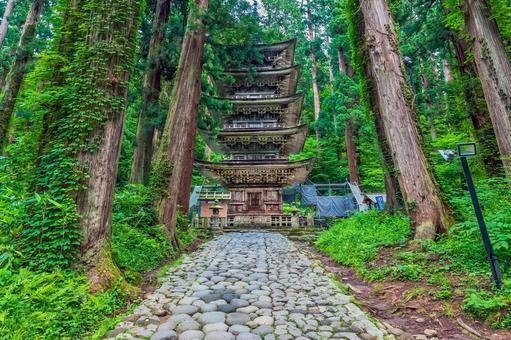
In this article, we’ll take a deep dive into the lesser-known history, structure, and architectural techniques of the Haguro-san Five-Story Pagoda— as well as all the details about the special illumination event happening in the summer of 2025.
From the Heian to the Muromachi Period— The Story of the Pagoda’s Construction and Reconstruction
The origins of the Haguro-san Five-Story Pagoda trace back to the mid-Heian period, in the early 10th century. It is said to have been built between 931 and 937 by Taira no Masakado, a renowned military commander from the Kanto region.
While Taira no Masakado is often remembered as a rebellious hero, he was also deeply devout, seeking powerful protection from the gods and buddhas. It is believed that he built the five-story pagoda in Dewa to pray for the protection of the nation, victory in battle, and to honor his ancestors. His decision to construct it in the sacred land of the Dewasanzan—then a major center of Shugendō practice—reveals the special reverence he held for this spiritual region.
Time passed, and in 1372—during the Muromachi period— the pagoda once again drew attention.
The original pagoda built by Taira no Masakado had suffered damage over the centuries from wind, snow, and earthquakes, eventually reaching a point where reconstruction became necessary. It was then that a powerful branch of the Fujiwara clan stepped in. Backed by imperial support and strong religious devotion, they rebuilt the pagoda with refined techniques and a dignified architectural style— laying the foundation for the structure we see today.
This reconstruction was far more than a simple repair—it was a grand undertaking that reflected the spirit of the era, a fusion of *Shinbutsu Shūgō* (the syncretism of Shinto and Buddhism) and the refined culture of the aristocracy.
A Masterpiece of Wood and Craftsmanship — The Central Pillar Vibration-Control System and the Art of Kokera-buki Roofing
The structure of the Haguro-san Five-Story Pagoda showcases Japan’s proud tradition of architectural craftsmanship. One of its most remarkable features is the *shinbashira*—the central pillar hidden within the pagoda.
The *shinbashira* is a massive wooden pillar that runs through the center of the five-story structure, stretching from the foundation all the way to the underside of the top roof. Remarkably, it is not rigidly connected to the rest of the building’s frame. Instead, it moves independently during earthquakes, absorbing and reducing vibrations—a sophisticated seismic damping system developed centuries ago.
This ingenious system is considered a pioneering form of “wooden seismic isolation,” and the very same principles have been adapted in modern high-rise architecture— including structures like the Tokyo Skytree.
Another remarkable feature is the roofing technique known as *kokera-buki*. This traditional Japanese method involves layering thin wooden shingles in multiple tiers to protect against rain. Crafted without the use of nails, it relies entirely on the natural properties of wood and the refined skills of master artisans. The result is a roof that harmonizes beautifully with nature while offering exceptional durability and timeless elegance.
The Haguro-san Five-Story Pagoda is a purely wooden structure—built without a single piece of iron or concrete. And yet, it has withstood over 600 years of harsh weather, standing to this day in nearly the same form as when it was rebuilt centuries ago.
Architectural Beauty in Harmony with Nature — The Cedar Avenue and the Grand Jiji-sugi Tree
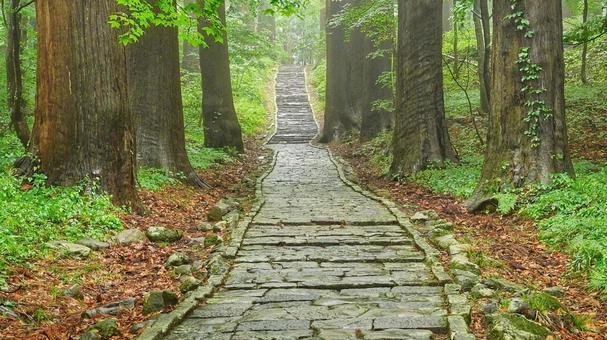
The Haguro-san Five-Story Pagoda stands halfway along the stone stairway (*Ishidan*), the sacred pilgrimage path up Mount Haguro.
This stone stairway stretches approximately 1.7 kilometers and consists of 2,446 steps. As you ascend the path, surrounded by towering cedar trees, the forest suddenly opens up— and the five-story pagoda reveals itself in quiet majesty.
Behind the pagoda lies a majestic cedar forest, with trees over 300 to 500 years old. Nearby stands the awe-inspiring *Jiji-sugi*—a giant cedar estimated to be around 1,000 years old.
The *Jiji-sugi* (Grand Cedar), like the pagoda itself, is designated as a National Natural Monument. It stands as a powerful symbol of the deep connection between nature and human spirituality.
The five-story pagoda blends seamlessly into its natural surroundings— a man-made structure that feels as though it were part of the forest itself. This harmony is the essence of Japanese architecture, and it’s precisely what stirs the hearts of all who visit.
In 2025, Light Returns to the Night Forest — The Illumination of the Haguro-san Five-Story Pagoda
Once a year, the Haguro-san Five-Story Pagoda—steeped in history and spiritual reverence— emerges in a dreamlike glow from the darkness of the forest. This is the “Haguro-san Five-Story Pagoda Illumination.”
The limited-time event is officially set to return in 2025 as well.
Gazing up at the National Treasure, quietly illuminated in ethereal light amid the darkness of the cedar forest— it’s a truly otherworldly experience, far removed from everyday life.
**Illumination Event Overview (2025)**
-
Event Period:July 18 (Fri) – September 23 (Holiday) *Limited to 20 nights only*
-
Time:
-
July & August: 7:30 PM – 9:30 PM (Last admission at 9:00 PM)
-
September:7:00 PM – 9:00 PM (Last admission at 8:30 PM)
-
-
Location: Haguro-san Five-Story Pagoda (Haguro-machi, Tsuruoka City, Yamagata Prefecture)
-
Admission:¥500 (support contribution) for high school students and older
-
Organizer:Haguro-san Five-Story Pagoda Illumination Executive Committee
Concurrent Events
-
Haguro-san Candle Night:
-
Held on July 19, August 15, and from September 15 to 23, **Haguro-san Candle Night** gently illuminates the cedar-lined path and stone stairway, enveloping visitors in the soft, warm glow of candlelight.
-
-
Local mascot **Kitekero-kun** will also be making a special appearance!:
-
Yamagata’s beloved local mascot **Kitekero-kun** will appear on **July 19** and **September 23**— a favorite among families with children!
-
-
Food Trucks On Site:
-
Available on each event day from 4:30 PM to 9:00 PM(closed on August 16), these food trucks offer a delicious chance to enjoy local gourmet flavors.
-
-
Limited Edition Goshuin (Temple Stamp) Available:
-
On illumination event days only, a special **pre-written type** *Goshuin* (temple stamp) will be available.
-
**The More You Know, the Deeper the Wonder**
The Haguro-san Five-Story Pagoda is breathtaking at first sight— but understanding its history, structure, and the faith and craftsmanship behind it allows you to appreciate its beauty and significance on an even deeper level.
And the sight that appears only on summer nights is more than just a tourist event— it’s a sacred moment of reunion, a gentle reminder that over a thousand years of prayer still echo into the present.
At the gateway to Dewa Sanzan— encounter a National Treasure bathed in light.
This summer, why not go and experience that quiet, radiant glow for yourself?
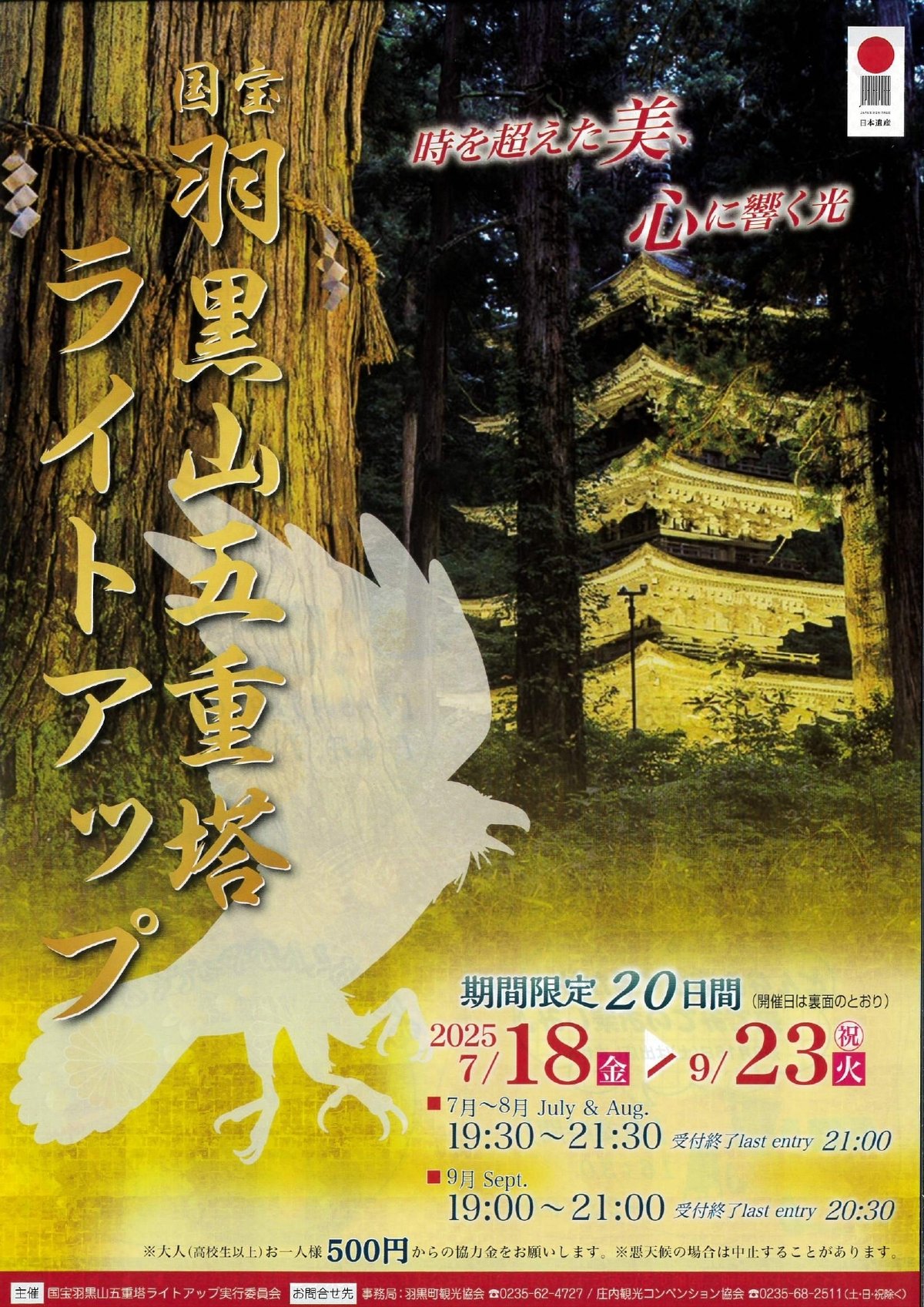
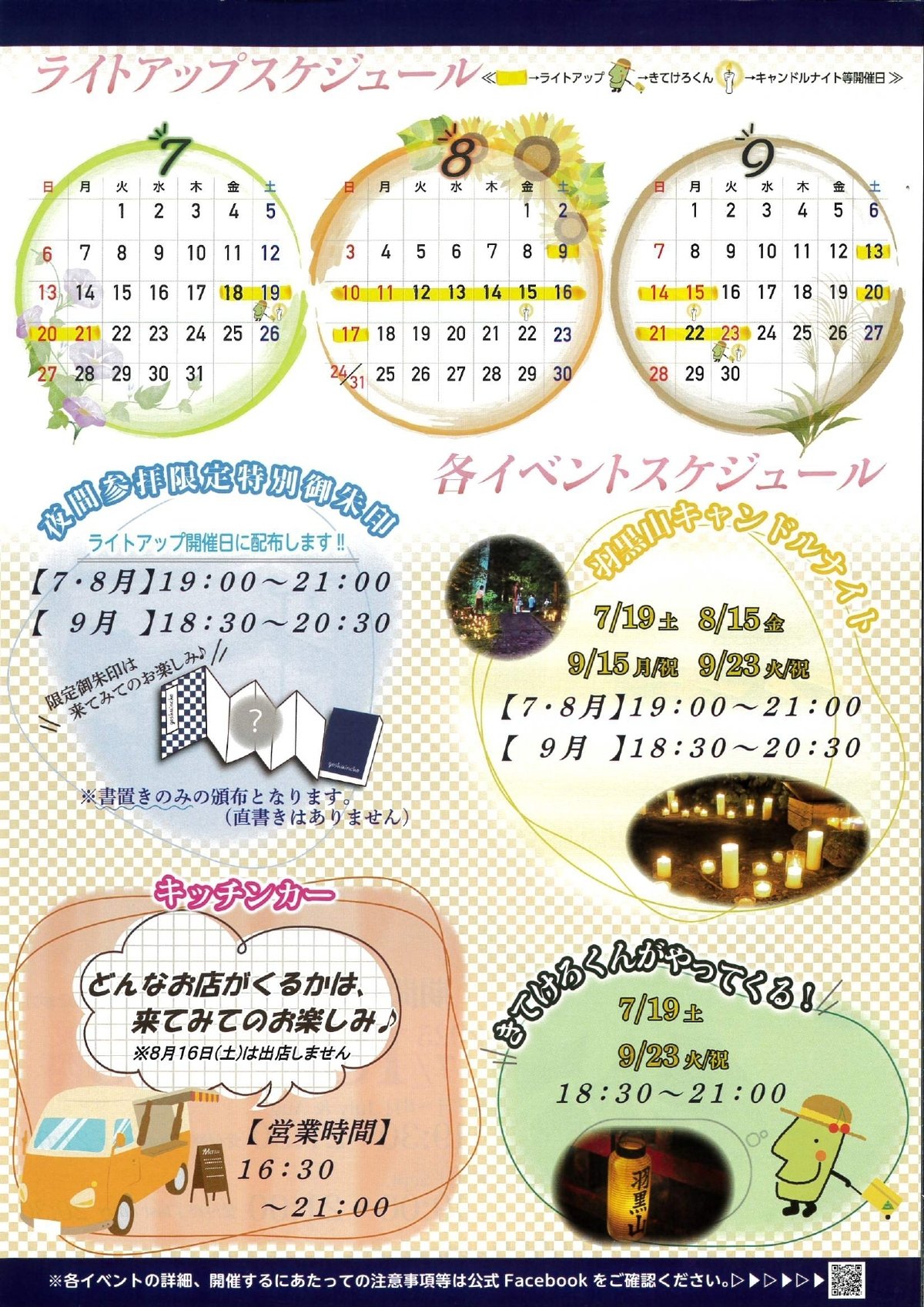
🏡Accommodation is available at the Guest House Watasagi!
Easily accessible from central Tsuruoka, it's the perfect base for exploring Dewa Sanzan! **WataUsagi**, a guesthouse with kitchen facilities and ideal for long-term stays, is also a great place to relax and recharge—before or after your pilgrimage or mountain trek. ✨
Guesthouse WataUsagi is uniquely located right between the three sacred peaks of Dewa Sanzan— making it the perfect place to stay for those exploring all three mountains.
We hope you will enjoy Tsuruoka and Shonai to the fullest with Guesthouse Watasagi as your base 😊.
We also promote the attractions of our local areas of Yamagata, Tsuruoka, and Shonai. The latest updates are posted on Instagram. Please follow us and stay tuned💕
Related Articles
The charms and benefits of Gassan Shrine, which opens on July 1, 2025!
Only Two Months!
Now is the time to embark on the **Dewa Sanzan Sanja Mōde** — the sacred pilgrimage to all three shrines.
yudonosan Shrine finally opens! - A Power Spot of Mystery and Healing

